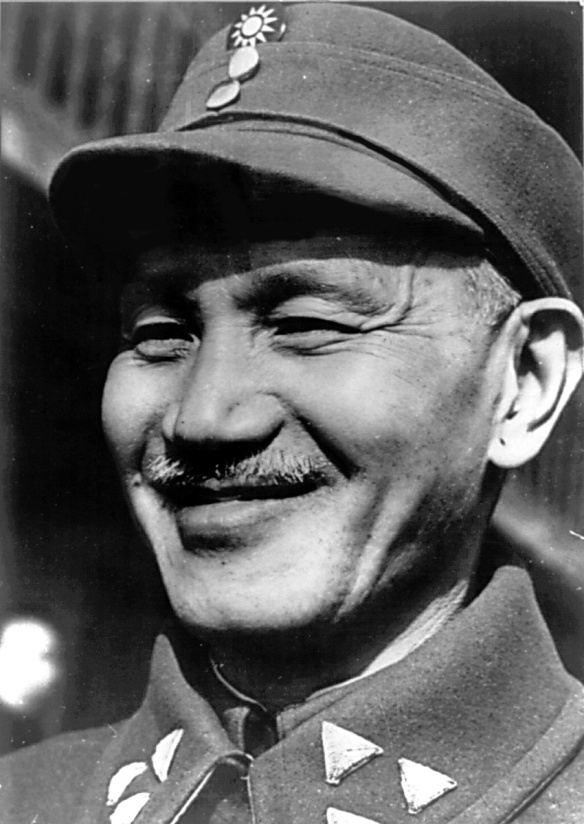
Chiang Kaishek was China’s leader from 1928 to 1949, and ruled over Taiwan until his death in 1975. He had some success in modernizing the mainland, but his government was undermined by corruption, factionalism, and war with Japan.
It was involvement in World War I, however, that led to one of the most important events in China’s modern history: the student demonstrations on 4 May 1919. Double-dealing by the Western Allies and Chinese politicians who had made secret deals with Japan led to an unwelcome discovery for the Chinese diplomats at the Paris Peace Conference: the former German colonies on Chinese soil would not be returned to Chinese sovereignty, but instead would be handed over to the Japanese, who had also entered the war on the Allied side in 1917. Patriotic demonstrations by students in Beijing on ‘May Fourth’ became symbolic of a wider feeling of national outrage that China was being weakened internally by its unstable, militarist governments, and externally by the continuing presence of foreign imperialism.
The outrage symbolized by the May Fourth demonstrations gave rise to a whole range of new thinking collectively termed the ‘New Culture’ movement, which stretched from around 1915 to the late 1920s. In China’s cities, literary figures such as Lu Xun and Ding Ling wrote fiction that was designed to alert China to its state of crisis. Political thinkers turned to a variety of –isms, such as liberalism, socialism, and anarchism, and also sought inspiration in a variety of foreign examples, including nationalist figures such as Washington and Kossuth, but also non-European figures such as Gandhi and Atatürk. The shooting of striking factory workers in Shanghai by foreign-controlled police on 30 May 1925 (the ‘May Thirtieth Incident’) infl amed nationalist passions yet further, giving hope to Sun Yatsen’s Nationalist party, now regrouping under the protection of a friendly warlord in Canton.
The ‘ism’ which emerged at this time and would later become dominant was, of course, communism. The Chinese Communist Party (CCP), later the engineer of the world’s largest peasant revolution, started with tiny, urban roots. It was founded in the intellectual turmoil of the May Fourth Movement, and many of its founder figures were associated with Peking University, such as Chen Duxiu (dean of humanities), Li Dazhao (head librarian), and a young Mao Zedong (a mere library assistant). In its earliest days, the party was more like a discussion group of like-minded intellectuals with few members, although it was still politically dangerous to take part in its activities. Few of its members yet had a strongly theoretical view of Marxism. The process that would help turn the CCP into a machine to rule China would be catalysed by the intervention of Soviet assistance. Before that happened, the CCP would find itself in alliance with the Nationalist leader, Sun Yatsen.
Sun Yatsen himself did not return to China as a national leader in 1917. Instead, he was forced to rely on the support of a militarist leader in Guangdong province, Chen Jiongming, who was sympathetic to Sun’s ultimate aim of reuniting China, and allowed him a base in Canton. The other key source of support for Sun was international. Sun had tried in vain to gain Western and Japanese assistance, but in 1923, he was able to gain formal support from the world’s newest and most radical state: Soviet Russia (later the USSR). The Soviets did not think that the fledgling CCP, which they advised from its foundation in 1921, had any realistic prospect of seizing power in the near future. Therefore, they ordered the party to ally itself with the much larger ‘bourgeois’ party, the Nationalists. At the same time, their alliance was attractive to Sun: the Soviets would provide political training, military assistance, and finance. From the Canton base, the Nationalists and CCP trained together from 1923 in preparation for their mission to reunite China.
Sun himself died of cancer in 1925. The succession battle in the party coincided with the sudden rise in anti-foreign feeling that came with the May Thirtieth demonstrations and boycotts. Under Soviet advice, the Nationalists and CCP prepared for their big push north in 1926, the ‘Northern Expedition’ that was supposed finally to free China from splits and exploitation. In 1926–27, the Soviet-trained National Revolutionary Army made its way slowly north, fighting, bribing, or persuading its opponents into accepting Nationalist control. The most powerful military figure turned out to be an officer from Zhejiang named Chiang Kaishek (1887–1975). Trained in Moscow, Chiang moved steadily forward and finally captured the great prize, Shanghai, in March 1927.
However, there was a horrific surprise in store for his Communist allies. Chiang’s opportunity to observe the Soviet advisers close-up had not impressed him; he was convinced (not without reason) that their intention was to take power in alliance with the Nationalists and then thrust the latter out of the way to seize control, Bolshevik-style, on their own. Instead, Chiang struck first. Using local thugs and soldiers, Chiang organized a lightning strike that rounded up Communist party activists and union leaders in Shanghai, and killed thousands of them with immense brutality. Chiang’s actions were part of a wider tapestry of violent conflict that rocked China throughout this period: in the south, where the CCP had the upper hand, there were massacres of Nationalist supporters.
The Nationalist government of Chiang Kaishek was born in blood. Yet it deserves a more objective assessment than it has had until recently. In many ways, the Nationalists under Chiang and the Communists, eventually led by Mao, had much in common. Both parties saw themselves as revolutionary, and both would swiftly conclude that their revolutions had come grinding to a halt. The slogan of the Nationalist party – ‘the revolution is not yet complete’ – could have been uttered with equal conviction by Mao. It was their similarity of intention, in part, that made their rivalry so deadly.